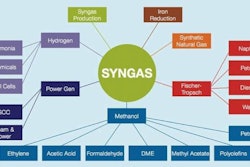
A new market report from Smithers Pira, The Future of Bioplastics for Packaging to 2024, estimates that packaging applications using bioplastics will grow at an average annual rate of 16.2%, with market value more than doubling from $4.4 billion in 2019 to $8.8 billion in 2024, growing at an average annual rate of 15%. However, notes the report, because bioplastics are rather recent additions to the portfolio of polymers available to manufacturers and users of packaging systems, their share of the plastics packaging market is thus relatively modest, “although forecast growth rates are very attractive.”
According to the report, there are six key trends driving the biopolymers industry today:
Plastics recycling: The state of the plastics recycling business environment will have a profound impact upon the incentives and urgency for developing biopolymers solutions to plastics-related environmental problems.
Polymers from natural raw materials: Naturally occurring polymers, such as starch and cellulose, will see significant extra demand for use in degradable plastics packaging applications.
Biodegradable aliphatic-aromatic polyester polymers: Aliphatic-aromatic polyester polymers’ use in packaging will grow. Demand will rise generally and in particular will be supported by moves to outlaw oxo-biodegradable plastics, such as the EU’s proposal of May 2019. A key challenge will be boosting heat resistance, barrier performance, and tensile strength to allow these to directly replace the current suite of oil-based plastics, such as PET.
Polymers synthesized by microorganisms: Polyhydroxyalkanoates’ (PHAs) use in packaging will also grow.While not generally biodegradable, biologically manufactured PHA displays physical properties roughly comparable to conventional PET. Thus, there is keen interest and activity to perfect and commercialize PHA production- and applications-related technologies.
Biomonomers: There is considerable research and development interest in identifying and perfecting commercially viable routes to these and other important industrial chemicals through biochemical processes. Industrial interests in these “green chemicals” are wide-ranging, including keen interest in their potential applications within the realm of biopolymer materials for packaging.Polylactic acid (PLA), bio-PET, and bio-polyolefins are the primary packaging plastics synthesized from biologically produced monomers.
Biotechnology companies: The forecast period of this report, through 2024, will be characterized by continued ferment, with new technologies and companies springing up. Many will quickly disappear due to technical deficiencies or unsustainable business models. A relative few will prosper and grow, and many of these will be acquired by established biopolymers firms or ultimately by multinational chemical and plastics firms.


























